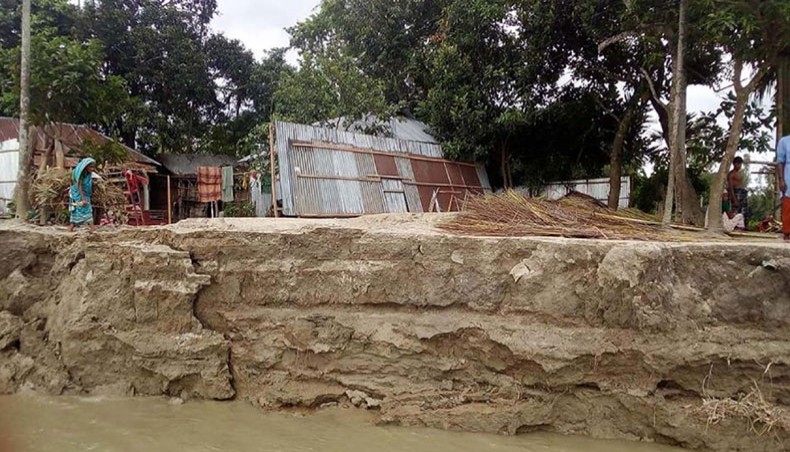Devastated crop fields emerge as flood waters recede
As flood waters receded from low-lying northern and north-eastern districts, the impact of its devastation on crops began to emerge.
Department of Agricultural Extension field offices estimated that the flooding affected crops cultivated in over a thousand hectares.
After returning homes, partly or completely damaged in floods that lasted for a week, farmers rushed to their crop fields to find their crops lie in ruins.
‘I lost everything I had cultivated in 3 bighas of land,’ said Ziaul Islam, a farmer of Balapara village under Aditmari upazila in Lalmonirhat.
Ziaul had cultivated Aman in his lands.
Aditmari is one of the five upazilas in Lalmonirhat affected badly by the floods caused by onrush of water from upstream and heavy rains inside the country.
New Age correspondent in Lalmonirhat referred to estimates prepared by the local office of DAE to report that crops cultivated in 659 hectares were damaged due to the flooding.
Of the affected crop fields, 210 hectares were used for creating seedbeds and cultivating Aman while the rest were used for growing vegetables, said DAE deputy director Bidhu Bhushan Roy.
Over 1,00,000 flood-affected people were facing acute crisis of drinking water as they were yet to get help from the government to cope with the situation.
Lalmonirhat deputy commissioner Safiul Arif, however, pledged to rehabilitate affected people once his office completed preparing a list of them.
New Age correspondent in Sylhet reported that the floods had submerged 536 hectares of Aush fields, 35 hectares of vegetables and 31 hectares of Aman seedbeds in Sunamganj district.
DAE assistant agriculture officer Firoz Khan told New Age that the crops were not completely damaged and hoped to get partial yield from the affected areas.
New Age correspondent in Kurigram reported that the floods completely damaged jute, maize, banana, and vegetables cultivated in 68 hectares.
Mujibur Rahman, a farmer of Saradob village under Kurigram Sadar upazila, said that his jute field was damaged from being under water for a week.
About 30 families in Saradob village were relocated on Monday as receding Dharla triggered erosion along its bank close to the village.
Water levels in both Dharla and Teesta receded rapidly in the last 24 hours.
Flood Forecasting and Warning Centre assistant engineer Sardar Udoy Raihan said that northern areas would see flood waters receding over the next 24 hours from Monday morning. ‘Rivers in central Bangladesh are on a rising trend and a few areas in the region may experience brief flooding.’
New Age correspondent in Sirajganj reported that low-lying areas in the district were flooded after the River Jamuna flowed over danger level at Kazipur.
The FFWC forecasted that low-lying areas in Bogra, Jamalpur, and Sirajganj districts might go under water in the next 24 hours.
Bangladesh Met Office issued signal 3 for Chittagong, Cox’s Bazaar, Mongla and Payra maritime ports due to a low formed over northwest bay.
It also advised fishing boats sailing over north bay to stay close to the coast until the weather improved.
News Courtesy: www.newagebd.net











